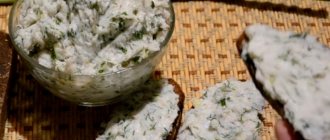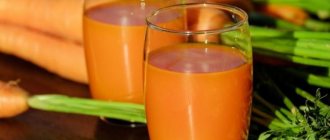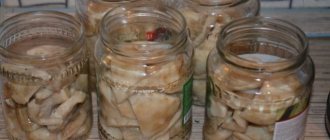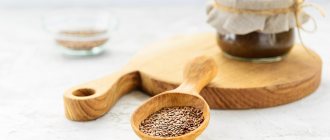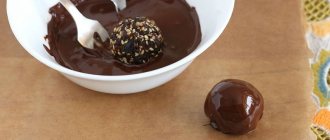What is smoked paprika
The homeland of the spice is sunny Spain. In this country, the spice is called pimenton. The seasoning is a dry powder that is obtained from fresh chili peppers.
In addition to culinary purposes, the aromatic spice is used as a food coloring in baking. Thanks to smoked paprika, the taste of pies or rolls becomes richer.
The spice goes perfectly with cardamom, ginger, rosemary, thyme, turmeric, saffron, and ground red pepper.
Appearance, taste and aroma of the spice
Smoked paprika, which has many uses, can have an orange or dark red hue. Thanks to its spicy smoky aroma, the seasoning adds an unusual taste to dishes with beans, beef stew, and casseroles.
Paprika is added to meatloaves, salad dressings, soups, and homemade sauces. Spice gives dishes not only a spicy aroma, but also a rich red color.
How and where is the spice produced?
The process of making spices is quite simple. The spice is obtained from mature chili fruits (pre-crushed and dried). Ancient recipes for preparing spices are still used today.
Typically the chili peppers are placed on a stone surface. There the vegetables dry naturally under direct sunlight. Then the raw materials are smoked over wood chips or logs (usually oak) for 1-3 weeks. When smoked paprika fruits acquire a specific smoky aroma, they are ground.
When making sweet paprika, bell pepper is additionally used.
Useful tips
- Shelf life is about 1 year.
- It is usually used in small portions, so it is not recommended to buy a large volume at once.
- It is best to store the seasoning in a glass jar in a dry and dark place.
- Since smoked paprika combines well with other spices, they can be safely added to simple recipes (like baked potatoes), even if they are not listed in the original description.
| Here you can ask questions, get answers, and share your experiences. |
Benefits and possible restrictions on use
The piquant smoked spice is a storehouse of vitamins and microelements. When properly stored, the spice retains its beneficial properties for a long time. The powder should be stored in a hermetically sealed container, protected from sunlight.
Spanish spice saturates the body with thiamine, pantothenic acid, calcium, iron, and phosphorus. It contains a large amount of selenium, zinc, sodium, and copper.
When consumed regularly, pimenton has a positive effect on the body:
- improves skin condition;
- supplies the body with naturally occurring antioxidants;
- helps improve vision;
- protects epidermal cells from damage;
- prevents the development of arthritis and heart disease;
- reduces the likelihood of age-related macular degeneration of the retina;
- protects the body from the effects of free radicals.
When used regularly, paprika prevents the development of cancer pathologies. The spice contains vitamin E, which is prescribed by neurologists as part of complex therapy for sleep problems.
If you regularly add spice to your dishes, you can forget about the following pathologies:
- poor blood clotting;
- weakened nails;
- skin problems;
- autoimmune diseases;
- "dormant" hair follicles.
The use of spices in cooking is contraindicated for gastritis and severe kidney diseases. People with chronic liver pathologies should also refrain from consuming the spice. In the presence of these conditions, its use can provoke an exacerbation of diseases. The use of paprika is also limited in case of frequent attacks of angina pectoris.
Historical reference
Paprika is native to South America. Red peppers were brought to Europe by Spanish conquistadors in the 16th century. They called the seasoning “Indian red salt.”
The new spice quickly gained popularity, mainly because it was not too expensive. The thing is that ground black pepper at that time was literally worth its weight in gold - and therefore was used exclusively by chefs of the nobility. Paprika turned out to be much more accessible.
Today, one of the main producing countries of this seasoning is Hungary. The country produces seven varieties of paprika, which differ from each other in color, pungency and aroma. Hungarians often call paprika “red gold” and it is present as an essential ingredient in many Hungarian dishes.
Use in cooking
With the addition of paprika, you can cook steamed vegetables, dishes with cereals, meat, fish or seafood. It is important to use the spice correctly:
- it should be added to food at the end of cooking (during prolonged heat treatment, paprika loses its rich color and pleasant aroma);
- If you add spices to a dish at the very beginning of cooking (this will give it bitterness), you can ruin the taste of the food.
The spice will be especially harmonious in:
- gravies;
- marinades;
- vegetable stew;
- stewed beans;
- spicy popcorn;
- pasta;
- pizza;
- baked potatoes.
Using seasoning
The list of culinary uses is very long - we recommend adding seasoning in the following cases:
- For first courses to add a slight pepper flavor;
- To meat to get a rich shade;
- Add to sauces and marinades for piquancy (don’t forget about the famous barbecue);
- A slight note of sweetness will appear in salads and cold appetizers;
- Hot side dishes (potatoes, rice) and vegetable dishes will acquire an appetizing color and alluring aroma;
- Baking and desserts will only benefit - use the spice as a coloring agent, as well as to highlight the main taste qualities.
Let's give a couple of useful tips:
- Pairs well with pepper, coriander, nutmeg and bay leaf;
- Do not put it in the dish at the same time as cilantro. Do you think coriander and cilantro are the same thing? You will find the answer here.
As you can see, it was not difficult to understand what paprika is. Now it’s worth finding out what beneficial properties this bright, attractive spice has.
Recipes with added spices
The preparation of Barbecue and Chilindron sauces is incomplete without smoked paprika. The latter is considered typical of the cuisine of the northern coast of Spain. It is served with chicken, it is an obligatory component of the dish of the same name, and also with lamb.
To prepare Chilindron sauce you will need:
- tomato - 1 pc.;
- garlic - 1 clove;
- onions - 1/2 pcs.;
- olive oil - 20 ml;
- dry red wine - 50 ml;
- jamon - 10-20 gr.;
- bell pepper - 1 pc.;
- chili pepper - 1/2 pcs.;
- fresh parsley - 1-2 sprigs;
- sugar, salt, smoked paprika - to taste.
Cooking process:
- The tomato is blanched (an incision is made, placed in boiling water, then in cold water), the skin is removed, and cut into small cubes.
- Pour oil into a saucepan, sauté chopped onion and garlic.
- Add the diced bell pepper, continuing to heat.
- Pour in wine and simmer until evaporated.
- Supplement with tomato pieces, chopped chili, pre-fried jamon, and parsley.
- Add salt, pepper, smoked paprika, heat the sauce for another 2-3 minutes, remove from heat and pour into a saucepan.
It is also difficult to imagine the famous Spanish “Paella” ; to prepare it you will need:
- round grain rice - 170 gr.;
- shrimp - 12-15 pcs.;
- mussels - 6 pcs.;
- tomato - 1 pc.;
- bell pepper - 1 pc.;
- garlic - 4 cloves;
- shallots - 30 gr.;
- fresh parsley - 1-2 sprigs;
- saffron;
- smoked paprika - 2 tsp;
- lemon - 1/2 pcs.;
- salt and black pepper - to taste.
Cooking process:
- Boil half the shrimp without draining the broth.
- The remaining half is fried together with the mussels, without removing the shells, in olive oil.
- Add vegetables: diced peppers, onion in half rings and sauté for two minutes.
- Add chopped parsley and garlic, juice of half a lemon, sauté a little, remove the mussels from the pan.
- Add finely chopped tomato (without skin), saffron, add broth in a 1:2 ratio to rice, salt and pepper to taste.
- Bring to a boil, add rice and cook with the lid closed.
- 10 minutes before readiness, add mussels, boiled shrimp and smoked paprika.
The spice is also used to prepare meat dishes. It goes well with any type of meat, but best with poultry. To prepare BBQ chicken wings on the grill (per 1 kg) you will need:
- fresh garlic - 4 cloves;
- smoked paprika – 2 teaspoons;
- vegetable oil - 3 tbsp. l.;
- ground red pepper, salt.
Marinade preparation process:
- In a deep container, mix crushed garlic and smoked paprika. Next, add freshly ground pepper and salt to taste.
- Add vegetable oil to the spice mixture.
- The contents of the container are mixed until smooth.
- Distribute the sauce evenly over the surface of the chicken wings so that the meat is well marinated, and leave for 2 hours in a cool place.
- Grill the wings under a closed lid, making sure that the temperature does not exceed 150-180 degrees.
Where can I buy
Just a few years ago, it was difficult to find such a spice on the shelves, however, now the situation has changed dramatically - due to increased consumer demand, stores bring spices from different manufacturers. But even if you don’t find the spice in your city, it doesn’t matter, it is sold in many online stores.
You can buy paprika at your local supermarket in the spice section. It is usually sold in an airtight glass container or jar.
You will most likely have to look elsewhere for spicier types and smoked paprika - in a specialty store or online store.
How to cook it yourself
The spice can be easily made at home. A smokehouse and other more accessible devices are used for this purpose.
In the smokehouse
The spice is made in a homemade or purchased smokehouse. A little chips are placed at the bottom of the device, which is distributed in a thin layer. The chili peppers are then carefully cut into equal halves and placed in the smoker.
Paprika is smoked for three days at a temperature of no more than 70 degrees. To obtain an ideal result, turn the pepper periodically.
Grilled
When choosing this method of making spices, pre-prepared wood chips are poured onto the bottom of the grill. Then install a grill on which the chili is laid out, leaving a small distance between the peppers, close the grill and start the program.
In a slow cooker
A slow cooker is also used to make spices. Fine sawdust is poured into the bowl of the device. Then put chili on them and select the “Hot smoking” mode. When choosing this method, the process of making smoked paprika takes 40 minutes.
In a saucepan
This way you can prepare the spice while relaxing at your dacha or in the forest.
- Place a small amount of wood chips in the bottom of a thick-bottomed pan.
- Place a thick layer of foil on top.
- Select the grate of the required size and diameter in advance. Chili fruits are placed on such a grill.
- Cover the pan with a lid and a thick towel.
- To avoid smoking, place a press on top of the pan and place it on the coals.
Smoked paprika, actively used in cooking, has an excellent aroma, bright hue, and spicy “smoky” flavor notes. The spice should definitely be in the “collection” of any gourmet who knows a lot about preparing a variety of dishes.
Offers on IHERB
The website of the popular American online store offers a wide selection of smoked paprika. A special feature of the portal is the owners’ commitment to organics. Natural spices from a large number of manufacturers are offered to buyers. There is no minimum order amount on the site and delivery to Russia is available by several transport companies.
The cost of the spice is affordable and starts from 150 rubles, so any gourmet can enjoy its taste and aroma if desired.
Did you like the article? Like ♥, subscribe to our channel and you will be one of the first to know about new publications!
And if you have something to share, leave your comments! Your feedback is very important to us!
Bell pepper - description
Sweet pepper is a very tasty and healthy vegetable that can be consumed in any form all year round. You can buy it or grow it yourself in your garden. Despite the fact that we are accustomed to calling it “Bulgarian”, the birthplace of this fruit is Central America. Cultivated sweet peppers were not brought to Bulgaria right away: first they visited Portugal and Turkey and only then reached the country with which we are accustomed to associate this vegetable. It was from Bulgaria that the “sweet pepper” (as the Bulgarians themselves called it) first came to the south of Russia. This happened back in the 17th century.
For reference
: according to another opinion, sweet pepper came to our country through Turkey and Iran back in the 16th century.
At first, this crop was grown directly in the southern climatic zones, but gradually, with the advent of varietal diversity, peppers penetrated deep into the country, and then reached the most extreme northern points, where peppers are grown indoors. This was facilitated by the fact that, as it turned out, this crop is extremely unpretentious to growing conditions. Yes, peppers love warmth and plenty of sunlight, but this can always be achieved artificially. It so happened that having learned the basics of agricultural technology for such a southern vegetable as pepper, even the northerners tasted all the benefits and freshness of the bright, rich taste of this super vegetable.
For reference
: Italy, Greece, Bulgaria, Spain and Hungary are the countries producing Bulgarian vegetables for export.
Everyone knows the beneficial properties of bell pepper. It helps maintain health and is also included in therapy in the treatment of many diseases. The vegetable contains a large amount of vitamins (A, E, K, P, C, B1, B3, B2, B6, B5, B9).
Bell peppers contain a huge amount of vitamin C, even more than black currants and lemon. And it contains the same amount of vitamin A as carrots.
It also contains many microelements, such as iodine, zinc, calcium, potassium, phosphorus, iron, sodium and other substances beneficial to human health.
What are the benefits of bell pepper:
- improves immunity;
- protects against colds;
- strengthens the body as a whole;
- prevents the development of cancerous tumors;
- improves blood composition, strengthens the cardiovascular system;
- normalizes digestion;
- improves metabolism;
- good for vision;
- promotes the production of endorphins. Indicated for stress, depression, fatigue;
- improves memory;
- improves the condition of hair and nails;
- helps cope with excess weight;
- ointments and creams often contain pepper, which helps cope with radiculitis and arthritis;
- included in vitamins to preserve youth.
Please note: the calorie content of sweet pepper is only about 25 kcal per 100 grams of product.
Botanical description
Externally, bell pepper has very attractive characteristics: the fruit has optimal dimensions (fits in the palm of your hand), is brightly colored, and its skin is thick, dense, smooth, and crispy. Peppers have a juicy, fresh taste and a bright, rich aroma.
Bell peppers, like tomatoes and eggplants, belong to the nightshade family. Wild pepper is a perennial plant, whereas we are used to planting it as an annual crop. Today there are tens of thousands of different varieties of sweet peppers, which have differences in the shape and taste of the fruit, their parameters, plant types, etc.
Pepper plants come in different heights (short, medium-sized and tall - depending on the variety), with sparse branches spread out. The leaves are large, ovate. Pepper blooms from June, bears fruit from July to October (November). It produces fruits that are predominantly cone-shaped and cubic in shape. In general, the fruits are large, thick, strong, and hollow inside. The length of the fruit reaches 20 centimeters. Plants have the ability to pollinate themselves and produce multi-seeded fruits of different shapes and colors.
Interesting Facts:
There are several types of bell pepper. Thick-skinned, fleshy varieties have taken root in our country:
- red is the sweetest;
- yellow – juicy, less sweet;
- green - with a simple viscous taste;
- black – tastes like green, the only difference is the color.
- in Europe these peppers are called “swei”.
Italians prefer to have sweet peppers cubanelle and peperoncino on their tables - their skin is thin and their shape is slightly elongated.
According to many people, paprika (also called Hungarian pepper) is another variety of sweet pepper from which the famous seasoning is made.
The Spanish variety of peppers is called piquillo. The fruits are thin-barked and very long. When eaten raw, it tastes like piquillo.
The sweetest and most delicate peppers are called “pimento” - these are small heart-shaped fruits.
Botanical characteristics
As noted above, the raw materials for the production of paprika are the fruits of the plant of the same name. In its cultivated form, paprika is an annual plant, and in the wild it is a perennial erect shrub of the Solanaceae family, which can reach one and a half meters in height.
Paprika blooms with large white flowers with purple, green or pale yellow veins. Flowers can be single or collected in bunches.
Paprika fruits are hollow, false berries containing a large number of seeds. The color of the fruit can vary - they are not only red and orange, but also yellow, green and brown.
Today, paprika is cultivated in some European countries (primarily Hungary and Spain), Turkey, and also in the USA.
